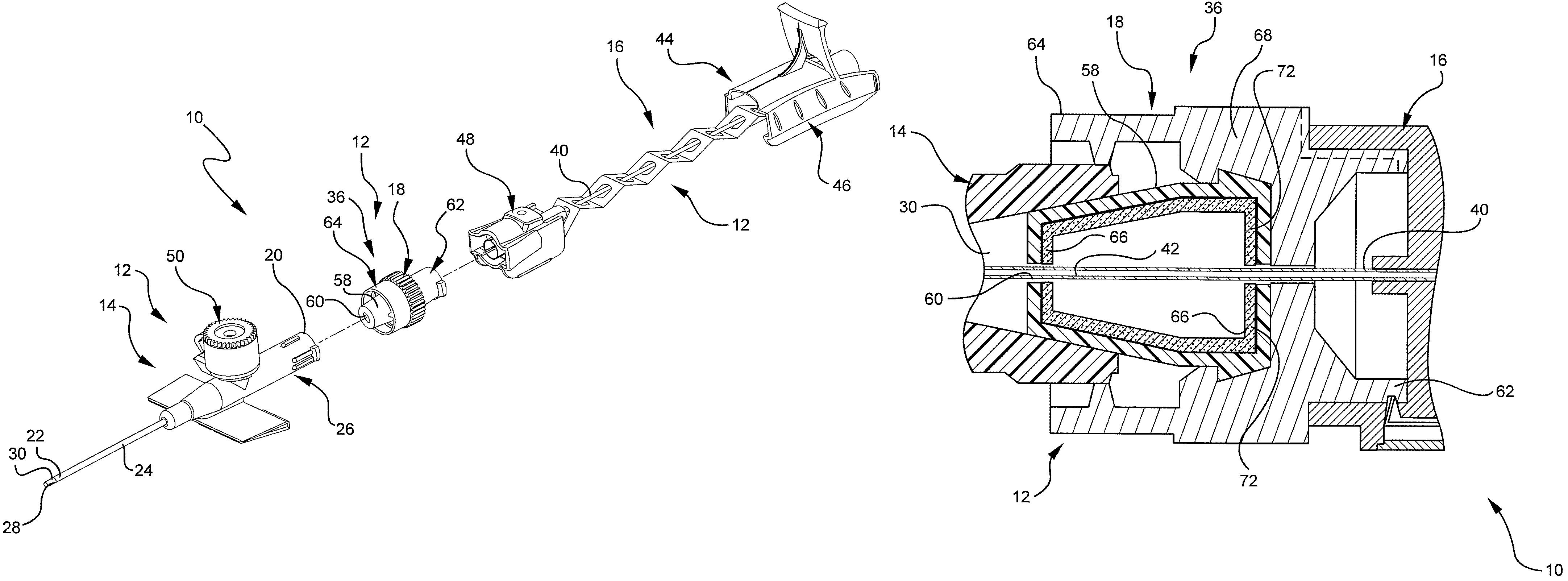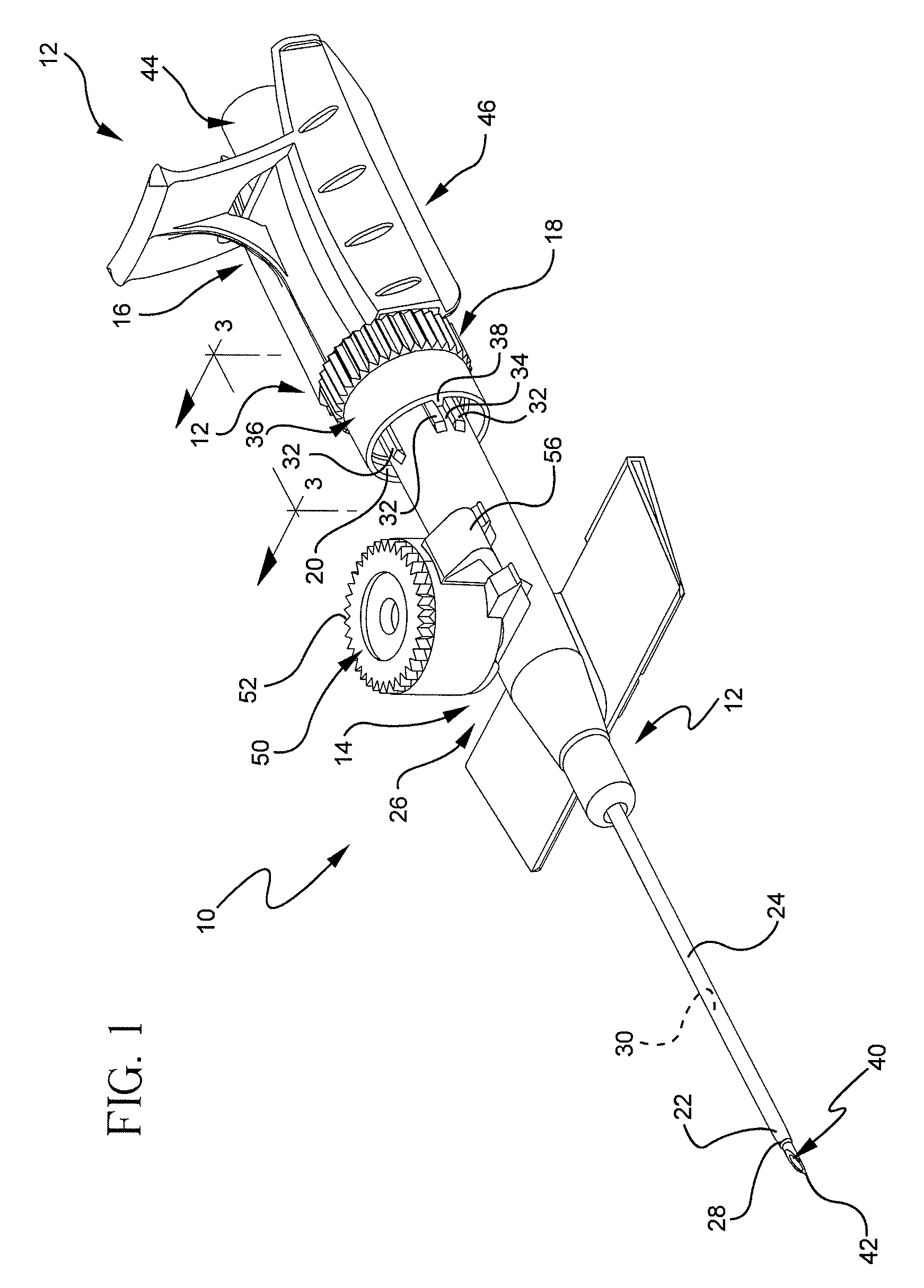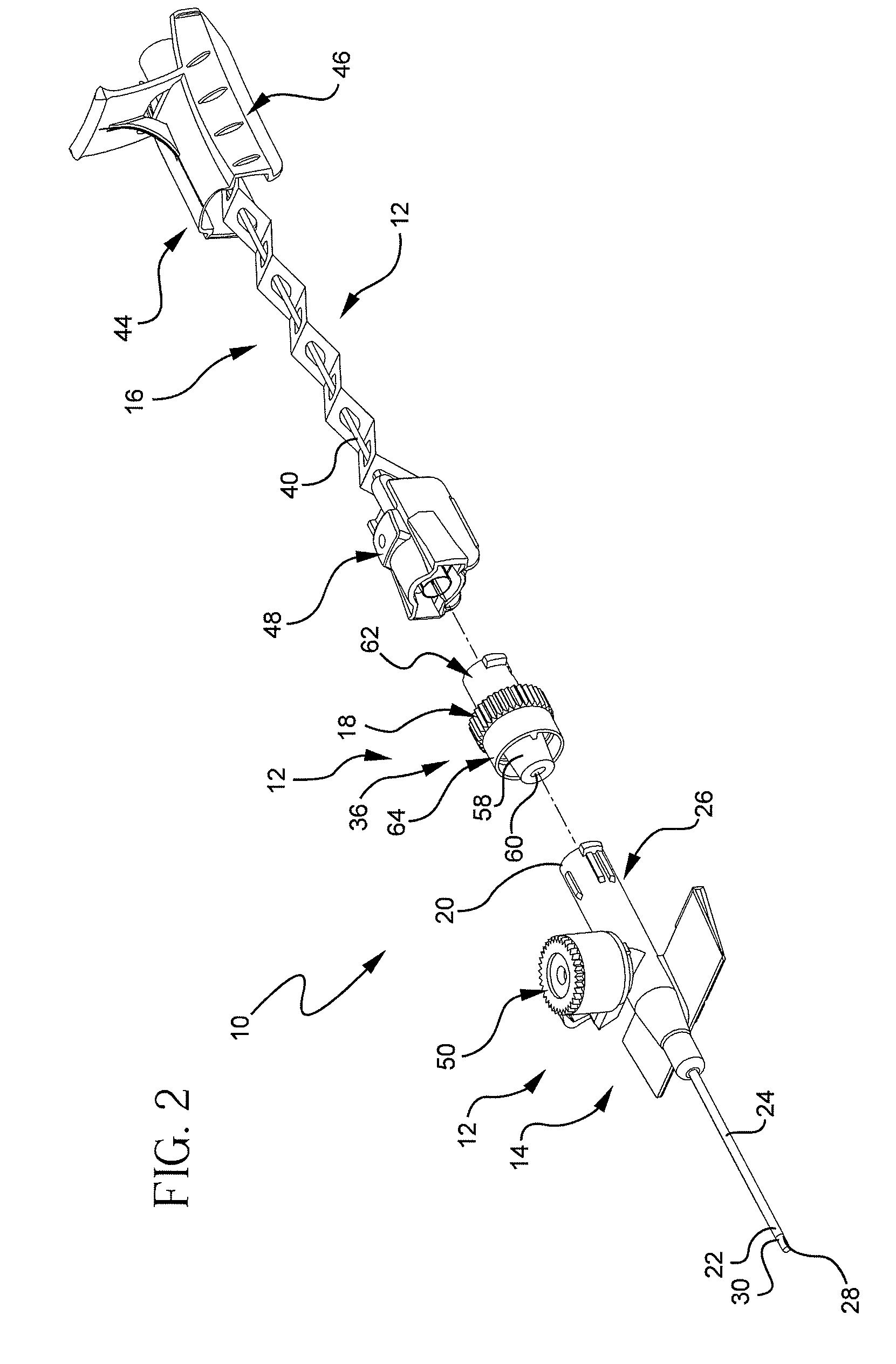Blood exposure prevention in vascular access devices
a technology of vascular access devices and blood exposure prevention, which is applied in the direction of catheters, other medical devices, infusion needles, etc., can solve the problems of increasing the risk of accidental needle sticks, the risk of blood exiting the catheter under the pressure of the patient's vascular system, and the numerous potential hazards of the catheter assembly. to achieve the effect of reducing blood exposur
- Summary
- Abstract
- Description
- Claims
- Application Information
AI Technical Summary
Benefits of technology
Problems solved by technology
Method used
Image
Examples
Embodiment Construction
[0022]The presently preferred embodiments of the present disclosure will be best understood by reference to the drawings. It will be readily understood that the components of the present disclosure, as generally described and illustrated in the figures herein, could be arranged and designed in a wide variety of different configurations. Thus, the following more detailed description, as represented in the figures, is not intended to limit the scope of the claims, but is merely representative of presently preferred embodiments.
[0023]Referring to FIG. 1, a perspective view illustrates an example of an extravascular system 10 including multiple vascular access devices 12. In this example, the extravascular system 10 includes a catheter assembly 14, a needle assembly 16, and a hemostatic adapter 18. The catheter assembly 14 has a proximal end 20 and a distal end 22 and includes a catheter 24 having an opening 26 at the distal end 22 of the catheter assembly 14 and a catheter hub 28 dispo...
PUM
 Login to View More
Login to View More Abstract
Description
Claims
Application Information
 Login to View More
Login to View More - R&D
- Intellectual Property
- Life Sciences
- Materials
- Tech Scout
- Unparalleled Data Quality
- Higher Quality Content
- 60% Fewer Hallucinations
Browse by: Latest US Patents, China's latest patents, Technical Efficacy Thesaurus, Application Domain, Technology Topic, Popular Technical Reports.
© 2025 PatSnap. All rights reserved.Legal|Privacy policy|Modern Slavery Act Transparency Statement|Sitemap|About US| Contact US: help@patsnap.com



